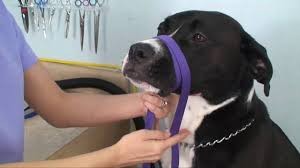Pet First Aid is the emergency intervention to prevent further injury and discomfort until you can reach a Veterinarian. In most places there is always the ability to call and talk to a Vet in an emergent situation, they can guide you in what to do and prepare for your arrival.
Emergency Approach
Safety: make sure that it is safe to approach, if you or others get hurt you will be of no help to the animal and will need medical assistance yourself.
Remain Calm, Assess the situation and triage what needs attention
Get Help: yell, whistle or use your phone to get help. You may need help restraining or someone to drive while you hold the animal.
Check responsiveness: will the animal respond to voice? touch? If no – check for breathing (watch for chest rising), check for pulse, if no you will need to start CPR and Artificial Respiration.
If responding – check for other injuries, keep warm and dry and transport to vet.
Safety tip: remember to restrain injured animals prior to administering pet first aid.
Transportation
Restraint:
Due to pain, injured or ill animals can be unpredictable (even when they know you).
Dogs should have a muzzle or mouth tie applied before first aid is attempted (or someone to support and hold the head) unless vomiting or bleeding from mouth or a suspected jaw injury.
Cats/Small Dogs should be wrapped in a towel or jacket.
If possible transport in a carrier to prevent movement
support the spine when transporting
keep injured leg up- if a large dog and they are walking ….allow them to, with support.
Unnecessary movement of an injured animal will increase pain and may cause further injury.
The next segment will be on CPR/Artificial Respiration……or if you would rather not wait, sign up for a pet first aid course through St. Johns Ambulance


